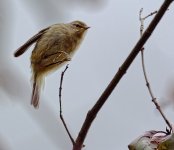Thanks for the input. So just using AF-C in conjunction with Back Button Focus is good enough to get BIF shots? I’ll play with the other settings (Manual aperture & shutter) in conjunction with Auto ISO, as I get to know the camera better, and see how I get on.
I don't have the D7200, though I think it offers the luxury to select all kind of settings, perhaps confusingly so. Focus priority, as nikonmike prefers, is fine, while shutter priority could give you "early successes" that are motivating.
With my Nikon1 I don't have so much choice: AF-C comes with shutter priority, AF-A means focus priority. I keep changing, and it doesn't matter too much. But I think starting with AF-C and single center point makes sense. It can be a challenge to find the bird quickly enough in the EVF. Practice...
Over the next months in dim light you can shoot ducks at 1/125 seconds, to improve your panning technique. When the eye isn't sharp, your movement isn't perfectly synchronized.
Back button focus can be useful for birds that are smaller than a thrush. When the AF-C of most cameras fails anyway. See the photo below (shot yesterday) as an example (AF-C would be too slow, BBF on the twig gives you a fighting chance). Or if you shoot bats in flight. Not much hope to achieve autofocus after sunset...
I admit it is not the best time of the year, but I am sure you'll find crows. The D7200 must be able to handle them with AF-C, but it isn't easy. Dial in some exposure compensation of +1.3 or so for those black beauties.
"Pro" claims they shoot terns with BBF pressed, quickly take off their thumb when the tern flies an abrupt turn, and reengage BBF press once they've got the tern back in EVF view is "impressive", but for now you should better forget it and simply file under "bragging". Even if it were true (I doubt it), only few will be able to master that technique.





